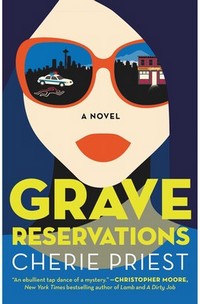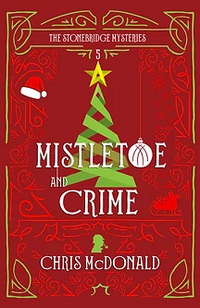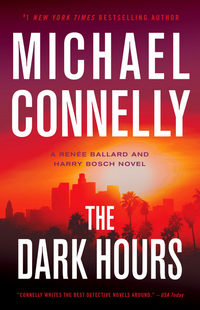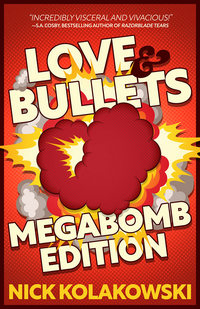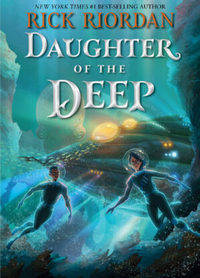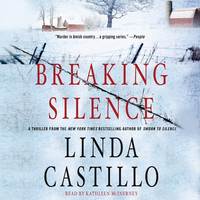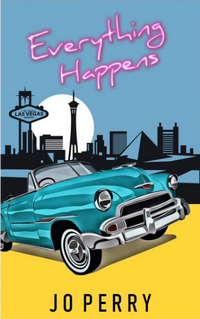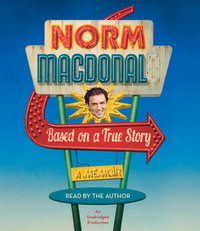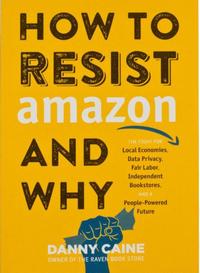 |
Pureby Jo Perry Paperback, 289 pg. Read: October 6, 2021 |

Doctor Christiansen waited a moment after the final shudder and wheeze. “She’s gone,” he said and to make sure I understood, and added, “I and everyone here at Sunny Morning Elder Care Living are deeply sorry for your loss.”
Well, my aunt wasn’t “gone.” She was right there, her small, cold hand in mine.”
What’s Pure About?
Ascher Lieb, arrives at her dying aunt’s bedside too late to say goodbye, she’s not going to wake up again. But she’s present when they turn off the ventilator keeping her lungs working. Ascher returns to her aunt’s apartment to check on her dog and go through her belongings just in time for the facility to be quarantined with her in it.
This is the early days of COVID-19 in Los Angeles, and no one is playing around. Ascher has to present herself twice daily for temperature/symptom checks, where she’s given some food to supplement the groceries her aunt had left behind—which Ascher supplements, in turn by frequent use of delivery apps. With most of the U.S. now out of lockdown—or anything resembling it—it might be hard to remember the early days—sanitizing everything, masks, gloves, shutting yourself away from everyone you can. A lonely, isolating, claustrophobic existence—made the worse for Ascher as she’s alone in someone else’s house with few of her own possessions, just a dog who doesn’t understand why his owner isn’t coming home.
And I’m going on far too long—how do I summarize this? Gross over-simplification:
Ascher volunteers briefly at a Jewish Burial Society. She’s convinced there’s something suspicious about the death of one of the people she attends to. Driven by impulses and emotions she’s not sure she can identify, Ascher seeks to discover this woman’s identity and learn what caused her death.
Ascher also has to come to terms with her aunt’s death (which opens a can of worms about other deaths in her family, too), dodge the officials at her aunt’s facility while she’s breaking quarantine, try to hew close to COVID restrictions, deal with a bunch of personal issues arising from her being quarantined away from her apartment/roommate, cope with the dumpster fire that was 2020, and…there’s a possible (probable?) supernatural element, too. That sounds like a lot going on—and it is—but it never feels that way. At least for the reader—Ascher feels it.
“Everything Else”
The mystery at the core of this novel is a pretty good one—and Ascher’s not a sleuth by any means, her attempts at being an amateur sleuth are as amateur as they come. It’s worth reading Pure for this aspect alone.
But for me, it was the least interesting part of the novel. Everything else going on (except maybe the stuff with her roommate) was much more interesting and worthy of reflection. For one: Ascher’s reaction to death—her aunt’s and others—have shaped her more than she realizes. Her coming to grips with it, her seeing how death has affected important choices she’s made throughout her life—and seeing what she does with these realizations? That’s what separates Pure from other mystery novels.
So, what did I think about Pure?
This is a great novel, an immersive read—I had a hard time putting the book down, and a harder time not thinking about it when I had put it down. And I was on vacation when I read this—I had plenty of things to do, see and think about when I wasn’t reading. If I only had routine day-to-day things to think about, I’m not sure I’d have been able to focus on work/home life instead of the book.
The characters who aren’t Ascher are interesting enough—and there’s a couple I can think of that I would’ve liked to spend more time with. But that’s not possible in this book—Spring of 2020 was not a time to meet people and spend a lot of time with them. But your appreciation for this book is going to come down to what you think of Ascher and her actions.
This is a mystery novel about something—it’s more than a whodunit (assuming there was something for a “who” to have “dun”). It, like pretty much everything Perry writes, is about death and how we deal with it as humans (and one neurotic Mini-Pinscher). THere’s more to chew on, too, but that’d be telling…
It’s trite to say “this moved me.” But it did, and I can’t think of a better way to phrase it, so trite it is. Pure is the best thing I’ve read by Perry—it’s not the most entertaining, but it’s the best, and will likely stay with me in more detail than the rest. You won’t be sorry if you pick this up. You may regret not doing so. So, why take the chance?

![]()


